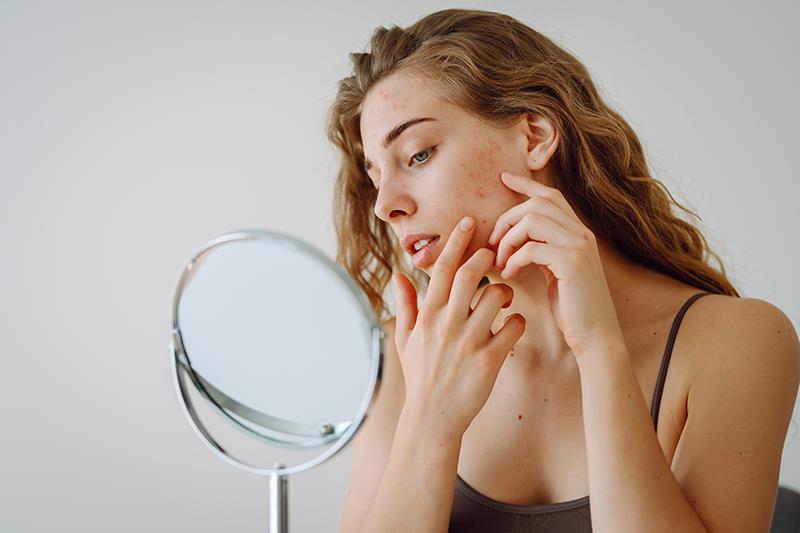Denifanstat reduces lesions in acne vulgaris





The fatty acid synthase inhibitor denifanstat shows potential for treating moderate-to-severe acne vulgaris, with good safety and tolerability, as demonstrated in a study from China presented at EADV 2025.
Given orally once daily, denifanstat improved moderate-to-severe acne vulgaris compared with placebo, reducing total, inflammatory, and noninflammatory lesions after 4 weeks of treatment. [EADV 2025, abstract LBA-213]
Denifanstat works by inhibiting fatty acid synthase (FASN), which reduces both sebum production and inflammation to treat acne. It suppresses de novo lipogenesis (DNL) in sebocytes, resulting in less oiliness and a less conducive environment for acne bacteria to thrive.
“[Denifanstat] also blocks inflammation by downregulating cytokine release and suppressing T-helper 17 cell differentiation,” said Dr Leihong Flora Xiang, professor and vice-chair of the department of dermatology at Huashan Hospital, China, during her presentation at EADV 2025.
Trial population
This double-blind, placebo-controlled, multicentre trial involved 480 participants who were randomly assigned to receive either denifanstat 50 mg (n=240) or a placebo (n=240) once daily for 12 weeks. The mean age of the participants was 22.6 years, and 68.8 percent were women. The mean inflammatory and noninflammatory lesion counts were 42.6 and 59.5, respectively. Eighty-five percent of the participants had an Investigator’s Global Assessment (IGA) score of 3 (moderate) on a scale from 0 (clear) to 4 (severe).
Primary endpoints included the percentage of treatment success (defined as an IGA score of 0 (clear) or 1 (almost clear) with at least a 2-point decrease from baseline at week 12), as well as the percentage change in total lesion and inflammatory lesion counts. The key secondary endpoint was a percent reduction in noninflammatory lesion count.
All endpoints met
Denifanstat met all primary and secondary endpoints and was generally well tolerated.
In the intention-to-treat analysis, 33.17 percent of participants receiving denifanstat achieved treatment success compared with 14.58 percent of those who received placebo, with a between-group difference of 18.59 percent (p<0.0001).
Additionally, those treated with denifanstat achieved a 57.38 percent reduction from baseline in their total lesion count compared with 35.42 percent of those receiving placebo, for a difference of -21.96 percent (p<0.0001).
The denifanstat group also saw a greater reduction in inflammatory lesions (63.45 percent) than the placebo group (43.21 percent), with a difference of –20.24 percent between the two groups (p<0.0001).
Patients treated with denifanstat achieved a 51.85 percent reduction from baseline in noninflammatory lesion count vs a 28.94 percent reduction with placebo, resulting in a difference of –22.91 percent (p<0.0001).
“As early as week 4, those treated with denifanstat showed greater improvements across multiple efficacy endpoints than those receiving placebo,” added Xiang.
Adverse events
Treatment-emergent adverse events occurred in 58.6 percent and 56.3 percent of those receiving denifanstat and placebo, respectively, but most were mild or moderate.
Adverse events related to the study drug included dry skin (6.3 percent vs. 2.9 percent with placebo) and dry eye (5.9 percent vs 3.8 percent with placebo. No serious treatment-emergent adverse events were reported.